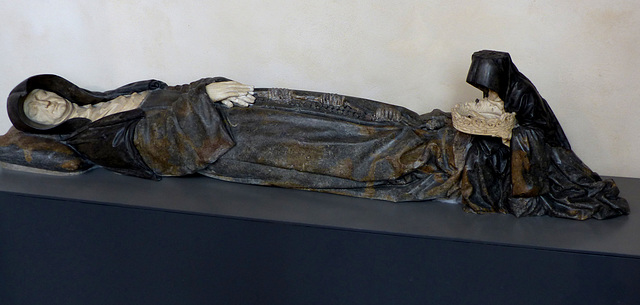Nancy - Eglise des Cordeliers
Nancy - Eglise des Cordeliers
Nancy - Eglise des Cordeliers
Nancy - Eglise des Cordeliers
Nancy - Eglise des Cordeliers
Remoncourt - Saint-Rémi
Remoncourt - Saint-Rémi
Dijon - Chapellerie Bruyas
Dijon - Notre-Dame
Dijon - Notre-Dame
Dijon - Notre-Dame
Dijon - Notre-Dame
Presqu’île de Giens
Cannes - Plage de la Croisette
Île Saint-Honorat
Abbaye de Lérins
Abbaye de Lérins
Abbaye de Lérins
Abbaye de Lérins
Cannes
Cannes - Carlton Hotel
Cannes - Le Suquet
Cannes - Tour du Masque
Nancy - Eglise des Cordeliers
Nancy - Eglise des Cordeliers
Nancy - Eglise des Cordeliers
Nancy - Eglise des Cordeliers
Nancy - Porte de la Craffe
Adenau - St. Johannes der Täufer
Adenau - St. Johannes der Täufer
Adenau - St. Johannes der Täufer
Adenau - St. Johannes der Täufer
Adenau
Vilich - St. Peter
Schwarzrheindorf - St. Maria und Clemens
Schwarzrheindorf - St. Maria und Clemens
Schwarzrheindorf - St. Maria und Clemens
Schwarzrheindorf - St. Maria und Clemens
Schwarzrheindorf - St. Maria und Clemens
Schwarzrheindorf - St. Maria und Clemens
Schwarzrheindorf - St. Maria und Clemens
Schwarzrheindorf - St. Maria und Clemens
Schwarzrheindorf - St. Maria und Clemens
Schwarzrheindorf - St. Maria und Clemens
Hannover - Marktkirche
Location
Keywords
Authorizations, license
-
Visible by: Everyone -
All rights reserved
-
47 visits
Nancy - Eglise des Cordeliers


Around 1050 Count Gerard, Duke of Lorraine, built a castle herre called Nanciacum, from which the town was to develop. In 1218 troops of Emperor Frederick II., fighting Theobald I, Count of Champagne, pilagged and looted the town. Rebuilt and surrounded by a wall, Nancy was granted city rights in 1265 and became the capital of the duchy in the following decades.
In 1477, Charles the Bold of Burgundy failed in the Battle of Nancy in his attempt to seize the city - and died during the battle.
Nancy belonged to the Duchy of Lorraine and thus to the Holy Roman Empire of the German Nation until the 18th century. Finally, the Duchy of Lorraine came to the Kingdom of France in an exchange between the House of Habsburg and the French King in the 18th century. Louis XV awarded Lorraine in 1737 to the deposed Polish king, Stanislaus I Leszczyński, who ruled the duchy from Nancy as Duke of Lorraine. After his death, in 1766, Nancy and the duchy finally fell to the French crown.
"Saint-François-des-Cordeliers" was erected around 1620 under and funded by René II of Lorraine after the battle of Nancy, it was consecrated in 1487, next to the Ducal Palace rebuilt at the same time.
The church became the burial place of the Dukes of Lorraine.
The building has a total length of 73 metres and a width of only 9 metres. The large single nave is typical of the architecture of the Cordeliers' churches. The convent´s buildings that survived the times are now used as museums, just like the church.
The gisant of Philippe de Gueldre (Philippa of Guelders) is widely known, as this is a work of famed French sculptor Ligier Richier from 1548.
Philippe de Gueldre (1467 - 1547) was a Duchess consort of Lorraine. She served as regent of Lorraine in 1509 during the absence of her son. She is seen here in her "habit", as she lived the last 29 years as a nun in the Convent of Poor Clares at Pont-à-Mousson.
In 1477, Charles the Bold of Burgundy failed in the Battle of Nancy in his attempt to seize the city - and died during the battle.
Nancy belonged to the Duchy of Lorraine and thus to the Holy Roman Empire of the German Nation until the 18th century. Finally, the Duchy of Lorraine came to the Kingdom of France in an exchange between the House of Habsburg and the French King in the 18th century. Louis XV awarded Lorraine in 1737 to the deposed Polish king, Stanislaus I Leszczyński, who ruled the duchy from Nancy as Duke of Lorraine. After his death, in 1766, Nancy and the duchy finally fell to the French crown.
"Saint-François-des-Cordeliers" was erected around 1620 under and funded by René II of Lorraine after the battle of Nancy, it was consecrated in 1487, next to the Ducal Palace rebuilt at the same time.
The church became the burial place of the Dukes of Lorraine.
The building has a total length of 73 metres and a width of only 9 metres. The large single nave is typical of the architecture of the Cordeliers' churches. The convent´s buildings that survived the times are now used as museums, just like the church.
The gisant of Philippe de Gueldre (Philippa of Guelders) is widely known, as this is a work of famed French sculptor Ligier Richier from 1548.
Philippe de Gueldre (1467 - 1547) was a Duchess consort of Lorraine. She served as regent of Lorraine in 1509 during the absence of her son. She is seen here in her "habit", as she lived the last 29 years as a nun in the Convent of Poor Clares at Pont-à-Mousson.
Fred Fouarge has particularly liked this photo
- Keyboard shortcuts:
Jump to top
RSS feed- Latest comments - Subscribe to the comment feeds of this photo
- ipernity © 2007-2024
- Help & Contact
|
Club news
|
About ipernity
|
History |
ipernity Club & Prices |
Guide of good conduct
Donate | Group guidelines | Privacy policy | Terms of use | Statutes | In memoria -
Facebook
Twitter

Sign-in to write a comment.